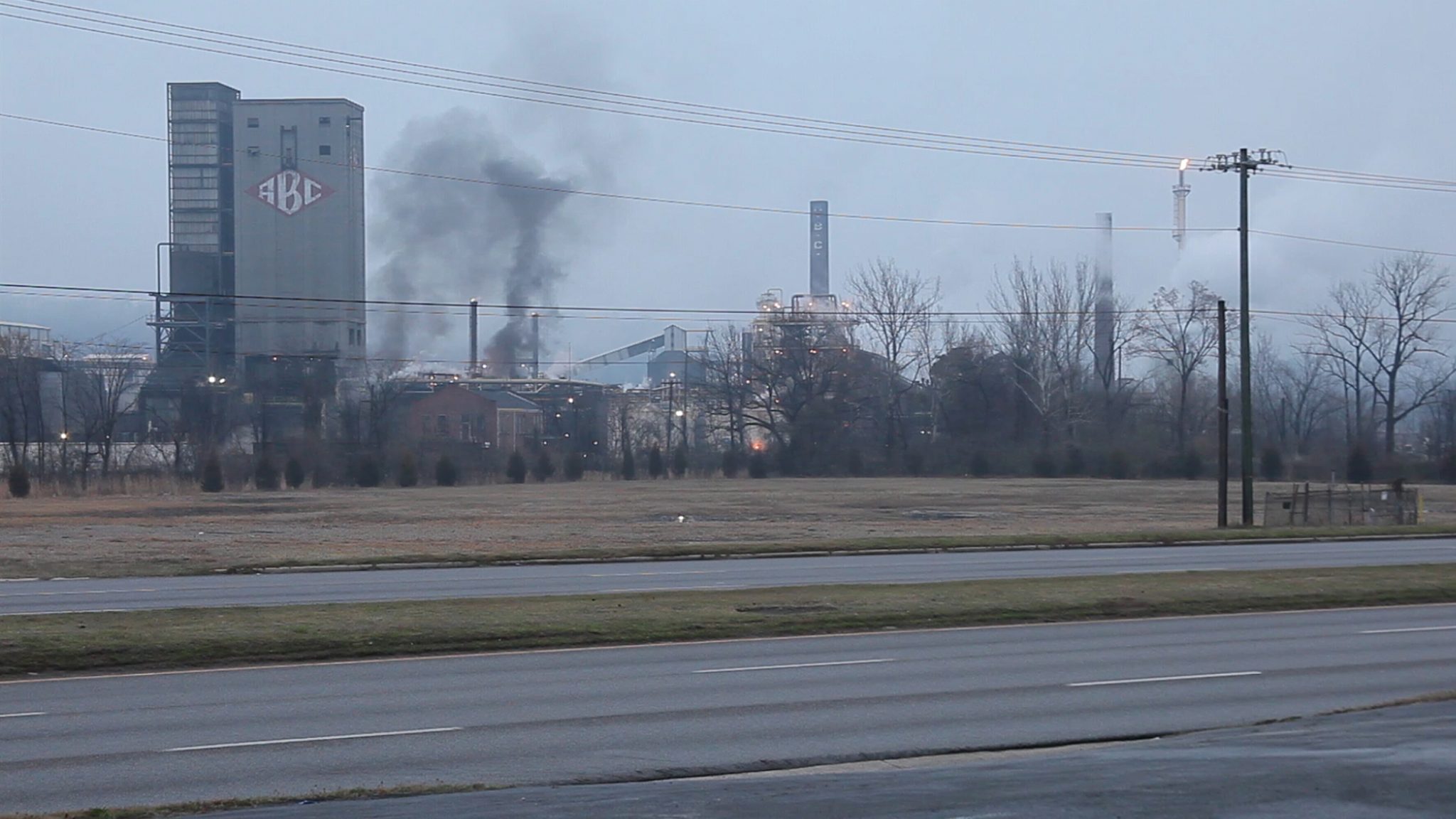How a Coke Plant Works
Coal is heated to about 1250 degrees Celsius in the coke ovens. This process is referred to as ‘dry distillation’ because these coke ovens are oxygen free, so the coal does not actually burn. This process takes around 18 hours to convert 35 tons of coal into 25 tons of coke.
After heating up the coal into coke, the coke is then unloaded from the oven by a pusher machine. The pusher machine has a pusher arm that puts the coke into a car that takes the coke to a coke quenching tower. Here, the coke is quenched with water. The coke is then taken to a coke wharf, where the remaining water evaporates. A reclaimer then feeds the coke from the wharf to a conveyor belt, which transfers the coke to the crushing and screening station. The finished product is about two-thirds the weight of the original raw material.
During the distillation process, a large amount of gas and smoke is generated, which, after purification, creates coke oven gas, and other by-products such as ammonia, tar, sulfur, naphthalene, and benzol. The creation of coke and the purification of gas are performed completely automated.
Coke makers use a mix of coal to improve the quality of coke they create. A high-quality coal does not generate high pressure on the coke oven, and they also shrink enough so that they are easily removed from the coke oven. The properties of coke are influenced by moisture content and density.
The main use of coke is to make iron. The burning of coal to coke produces carbon monoxide. A touch at the bottom of the furnace allows impurities to flow out of the furnace. This, coupled with the fact that many harmful impurities come from heating the coal is the reason why there is so much pollution that comes from the creation of coke.
Pollution prevention in coke making is focused on reducing emissions from the coke oven. There are many ways to help reduce pollution. One way is to improve the quality of coal feed, so that the coke produced is of higher quality. This helps reduce emissions of sulfur oxide and other pollutants. Another way is to use enclosed conveyors for the coal and coke handling. Also, use many windbreaks and reduce the drop distances. Using higher quality of coal helps reduce the time it takes to convert it into coke, it also helps reduce fuel consumption.
Glossary
Quenching: to rapidly cool with cold water.
Coke Wharf: an area where the coke can be loaded and unloaded.
Reclaimer: large machine used in bulk material handling applications.
Purification: the removal of contaminants from something.
Touch: come so close to as to be or come into contact with it.
Works Cited
Coking Plant (https://belgium.arcelormittal.com/en/work-environment/coking-plant/)
What Is Metallurgical Coke? (https://sciencing.com/metallurgical-coke-18741.html)
Coke Production For Blast Furnace Ironmaking Coke (https://www.steel.org/~/media/Files/ AISI/Making%20Steel/coke_prod_blast_furnace_ironmaking.pdf?la=en)
Coke Manufacturing (https://www.ifc.org/wps/wcm/connect/9ecab70048855c0 48ab4da6a6515bb18/coke_PPAH.pdf?MOD=AJPERES)
Coke Production (https://www3.epa.gov/ttnchie1/ap42/ch12/final/c12s02_may08.pdf)


